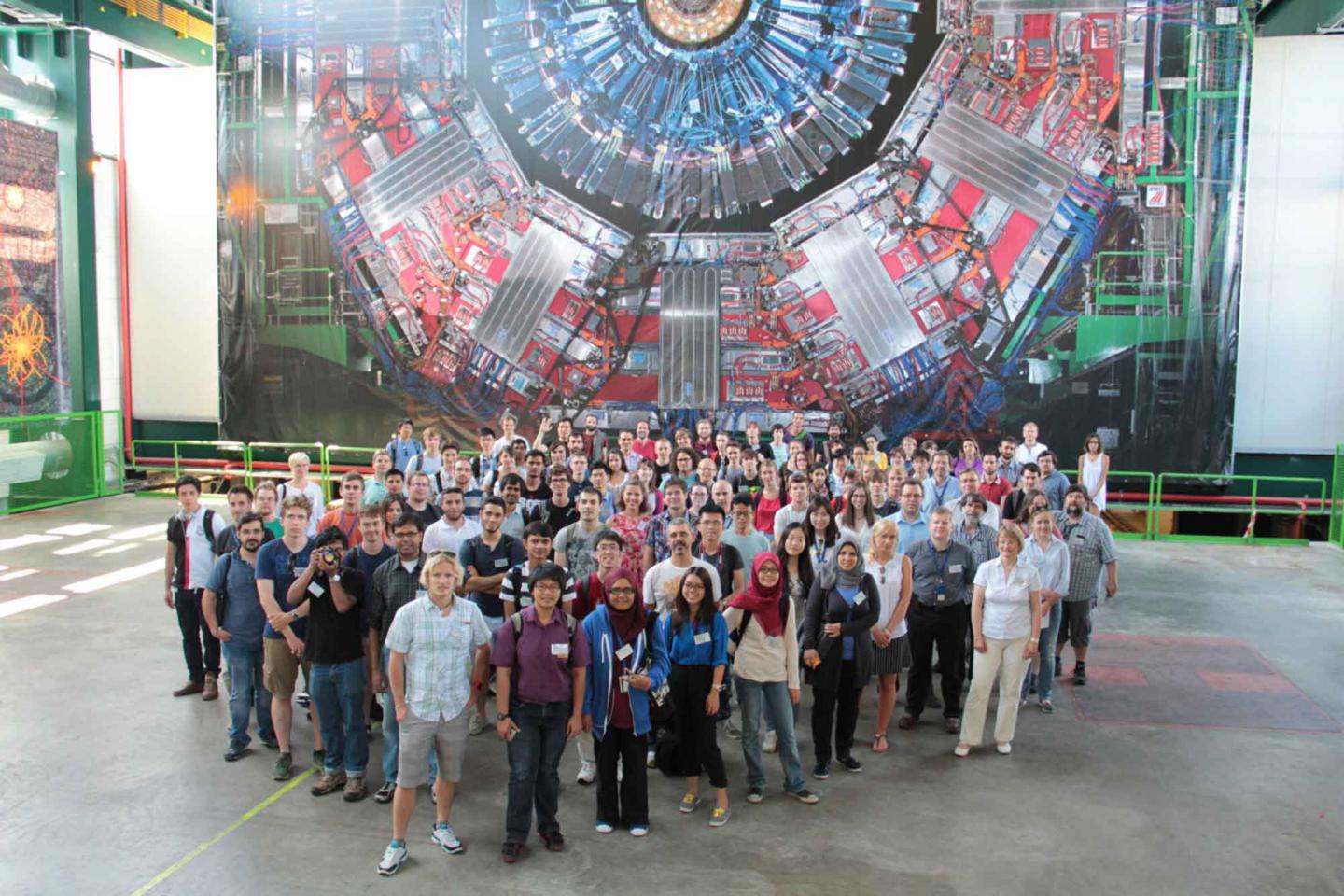by Juska Pekkanen and Nairit Sur
CMS held a special introductory session for newcomers and young members of the collaboration on 17 and 18 July. Juska Pekkanen (Helsinki Institute of Physics & University of Helsinki, Finland) and Nairit Sur (Tata Institute of Fundamental Research, Mumbai, India) recount the experience.
Nairit: Being a part of a collaboration like CMS is an unparalleled experience. Once you get over the initial amazement at the enormity of the project and slowly get to know more and more about the nitty-gritty of its working, you cannot help but wonder how exactly this immensely complex system with so many components, each with its own distinctive features, is managed and run in a smooth, coherent manner.
Juska: When I first heard about the CMS induction course at a project meeting back in Helsinki, I thought, “This is a great idea but it’s a pity that there wasn’t one when I started working for CMS as a summer student back in 2011.” Now, after attending the course as a fresh PhD student, I realise that even those of us with some experience with CMS have a lot to gain from such a course. When working with a giant like CMS, a couple of years is not nearly enough to get familiar with the myriad parts of the detector, not to mention the workings of the colossal 4000+-person collaboration. The newcomers’ course helped me a great deal in understanding the big picture.
Nairit: Our spokesperson Tiziano Camporesi set the pace on the first morning of the one-and-a-half-day session with a detailed introduction to CMS. Starting with the history of the collaboration, he described the physics objectives, the magnet system and subdetectors and the measurement of particles, before discussing the future of the detector and collaboration. He also introduced us to the functioning of the LHC, data acquisition and event reconstruction. This was followed by two sessions on tracking and calorimetry in CMS. Both the talks were very informative for a new PhD student like me. I had personal interactions with the speakers after the talks and got valuable inputs.
Juska: I have never seen our subdetectors introduced with such depth and detail, accompanied with plenty of interesting anecdotes and pictures of how things actually look like. Of course, all this info is available in various public sources, but you don’t just go and read this kind of stuff from the 1000+-page technical publications, it needs to be pre-chewed to be somewhat understandable in one go. The flow of information was fierce and pace quite fast so I could not grasp all of it right away, but for that I downloaded the slides from the course’s website for future reference. I’m sure they’ll prove invaluable when I need to describe the experiment in depth in my thesis!
Read the rest of this post at the CMS blog, Cylindrical Onion

